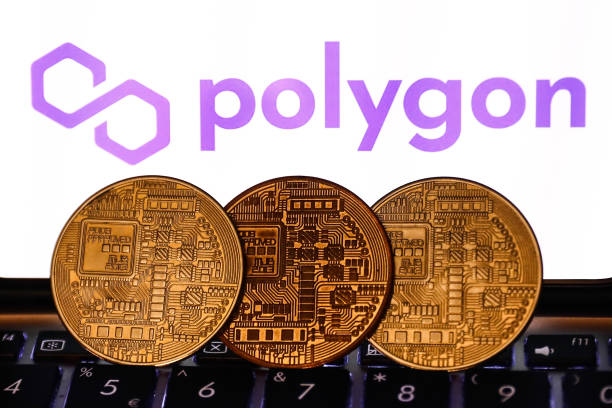Newer coins are sometimes forgotten these days in a market with over 5,000 cryptocurrencies but Polygon’s MATIC, on the other hand, stands apart. MATIC, Polygon’s native currency, was launched in late 2017 and is now among the top 15 cryptocurrencies by market value, having increased by more than 30 percent this week despite other crypto prices plunging in an industry-wide decline.
The Ethereum blockchain supports a wide spectrum of economic activities, from NFT marketplaces and games to the expanding DeFi ecosystem. Ethereum is ideal for this activity because it is compatible with smart contracts, which can be used to develop a wide range of applications.
The rising popularity of these apps, however, adds numerous transactions to the Ethereum blockchain — and as a result, transaction costs (also known as “gas”) can occasionally climb to the point that making tiny or frequent deposits is economically unviable.
Enter Polygon, a “Layer 2” scaling solution (or “sidechain”) that has evolved to give consumers with speedier transactions and reduced expenses. It functions as a fast parallel blockchain that runs alongside the main Ethereum blockchain. To utilise it, you must “bridge” portion of your crypto to Polygon and then interact with a wide range of popular crypto apps that were previously only available on the main Ethereum blockchain.
What Exactly is MATIC?
Polygon has its own coin, called MATIC, which is used to pay network fees, staking, and governance (which means that MATIC holders get to vote on changes to Polygon). MATIC may also be purchased and sold on Coinbase and other exchanges.
The word MATIC refers to a previous period in Polygon’s development. Developers renamed it as Polygon in early 2021 after debuting as Matic Network in October 2017.
How Does Polygon Function?
Polygon can be compared to a metro express train in that it runs the same route as the standard train but has fewer stops and hence goes significantly quicker. (The main Ethereum blockchain represents the local railway in this scenario.) Polygon employs a number of technologies to build this fast parallel blockchain and connect it to the main Ethereum blockchain.
Polygon has a proof-of-stake consensus technique to generate new MATIC and protect the network, which implies that staking is one way you may make money on MATIC you own.
Polygon blockchains are based on its proof-of-stake (PoS) sidechain, which uses a network of validators off the blockchain and subsequently finalises transactions on Ethereum’s main chain. This can significantly reduce the load on the main blockchain, resulting in less network congestion, better transaction speeds, and lower gas prices.
The Polygon network offers two types of chains: stand-alone chains, which are self-sovereign blockchains based on the Matic PoS chain and are compatible with Ethereum, and secured chains, which enhance their security via the use of a network of professional validators.
Polygon's Ambition And it's Impact on The Blockchain Industry
Polygon envisions a genuinely decentralised future without digital boundaries, in which individuals can freely trade value on a global scale without the intervention of third-party intermediaries or gatekeepers. For the blockchain sector, this entails a worldwide ecosystem free of technology or brand-related barriers, in which all blockchain networks may exchange information without friction.
Polygon has already increased industry interoperability — and taken the most essential steps toward a borderless digital world — by developing Ethereum’s internet of blockchains, a multichain ecosystem of blockchains interoperable with Ethereum.
Clocr - For Digital Estate Planning
We are always thinking about our assets and financial preparation for our family in the event that something were to happen to us. We hire attorneys to draft thorough wills to protect our families, but what about your digital assets? Clocr simplifies creating and managing a Digital Estate Plan, allowing you to safeguard assets of personal and financial worth to you and your family.
With Digital Estate Planning, which focuses on meeting the security and legal requirements of Digital Assets, the process of prioritising, organising, and sketching out your desires for your NFTs or Cryptocurrencies becomes extremely straightforward, and you can sleep well knowing your family is secured.
Investing in Cryptocurrency is simple, but planning for its future and security can perplex investors. Digital Estate Planning is a process that can help Cryptocurrency holders to organise and update Digital Assets (email accounts, blogs, social media accounts, photo libraries, cloud storage accounts, etc.) so that after sudden demise or incapacitation of the Cryptocurrency account owner, the beneficiaries have one place to go and access, manage, or close digital accounts according to the wishes of the deceased person.



